| THE ING NEWSLETTER | No. 3, September 2000 |
|
|
SCIENCE |
|
|
|
| Previous: | First Light of INGRID on the WHT ! | Up: | Table of Contents | Next: | S-Cam Update - Novel Capabilities for Resolving Old Problems ! |
Other available formats: PDF | gzipped Postscript
NAOMI Progress
René Rutten and Gordon Talbot (ING)
NAOMI has just arrived on La Palma after a long and tortuous trip from Durham to Portsmouth, to Bilbao, to Cádiz and finally to the Canary Islands, sailing the Bay of Biscay and the Atlantic. The Nasmyth Adaptive Optics system for Multi-purpose Instrumentation, NAOMI, is the common-user adaptive optics system for the William Herschel Telescope and its arrival on La Palma heralds the start of an intense commissioning period. Prior to this, an immense amount of work has been carried out over the past few years in the design, manufacture and testing of all parts of the system that build up the complex equipment. Teams from the University of Durham and the UK-ATC (and in the early days also from the RGO) have converted the original concept into a reality of hardware and software. The following weeks will have to prove that NAOMI is ready to sail the skies.
In brief, NAOMI will deliver an adaptive optics corrected focus and is situated in the GHRIL (Ground Based High Resolution Imaging Laboratory) Nasmyth focus. The specification of the system focuses on delivering diffraction limited image quality with high Strehl ratios at IR wavelenghts. The specification and technical performance of NAOMI is expected to be of such high quality that, in combination with the stable sky over La Palma very significant improvements in image quality will also be delivered in the future at visible wavelengths. NAOMI is funded from PPARC's instrument development line.
NAOMI is not really an instrument in its own right, as alone it will not deliver science. It will be used in conjunction with the INGRID IR camera to deliver diffraction limited IR images. Further future developments include the addition of a coronagraph and (very likely) the addition of an optical integral field spectrograph. These instruments will provide astronomers with state of the art tools for observations at the highest possible spatial resolutions.
Initially NAOMI will rely on finding natural guide stars on which to measure the wavefront distortions. We hope that in the future a laser guide star system will come into operation to open up nearly the full sky to adaptive optics correction at optical and near IR wavelengths.
The accompanying pictures show
NAOMI arriving on La Palma on 4 August and transport to GHRIL.
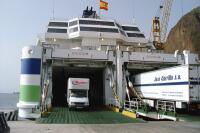
|
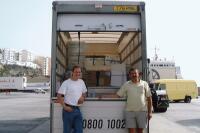
|
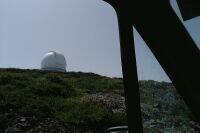
|

|
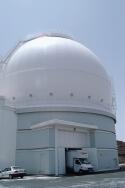
[ JPEG | TIFF ] |

|
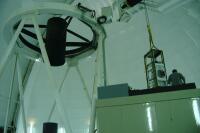
|
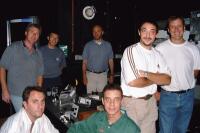
|
| Figures 1–8. From top to bottom and from left to right: 1) NAOMI arrives in the port of La Palma; 2) Alan Chopping and Raúl Concepción proudly show the NAOMI cargo; 3) Arrival at the observatory; 4) First stop at the INT; 5) NAOMI is transported to the WHT; 6) Carefully lifted to the instrument platform; 7) Set up at GHRIL, its new home; 8) Some of ING staff helping during first setup in the GHRIL room. | |||
Email contact: René Rutten (rgmr@ing.iac.es)
| Previous: | First Light of INGRID on the WHT ! | Up: | Table of Contents | Next: | S-Cam Update - Novel Capabilities for Resolving Old Problems ! |
| GENERAL | SCIENCE | TELESCOPES AND INSTRUMENTATION | OTHER NEWS FROM ING | TELESCOPE TIME |